Late summer is not the most exciting time of year in bonsai. Most conifers slow down a bit, decandled pines are busy producing new shoots, and deciduous trees aren’t looking as fresh as they did in Spring. Winter, on the other hand, is a great time to view bonsai, and Japan is a great place for the viewing. Thanks to Boon Manakitivipart, we can see some outstanding Japanese bonsai as they appeared this past winter.
The photos below are from the bonsai garden of Shinji Suzuki in Obuse, Japan. They were taken by Boon on his most recent visit to Japan this past February. I’ve done my best at guessing at the varieties, forgive me if I missed a few!
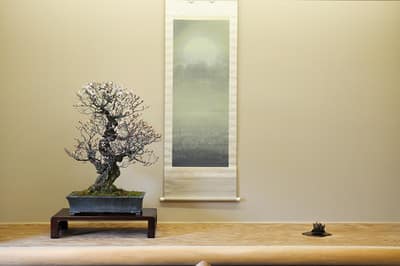
Ume – I don’t know the location of the tokonoma
Matt Reel has been studying bonsai with Suzuki since 2006, and he’s now senpai to Tyler Sherrod, who began an apprenticeship with Suzuki earlier this year. Matt and Tyler both worked with Boon before heading to Japan to study with Suzuki, much like Michael Hagedorn who wrapped up his study with Suzuki in 2006. Matt’s work is outstanding, and I expect the same from Tyler in the not-too-distant future.
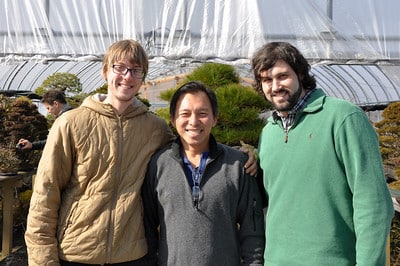
Matt Reel, Boon Manakitivipart, Tyler Sherrod
The trees in Suzuki’s garden never fail to impress me. Here is a selection of the trees under his care – I’ll post more soon.

Kuromatsu
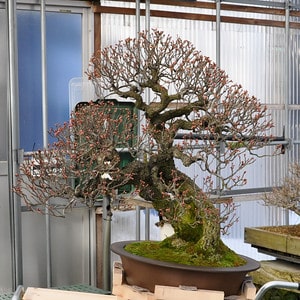
Ume

Bonsai
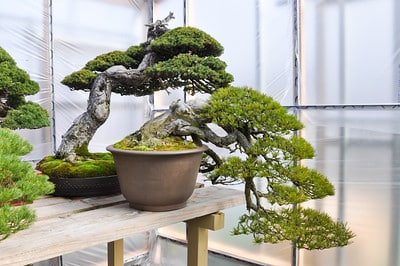
Goyomatsu
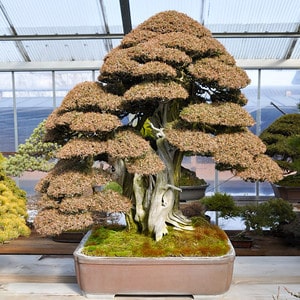
Tosho
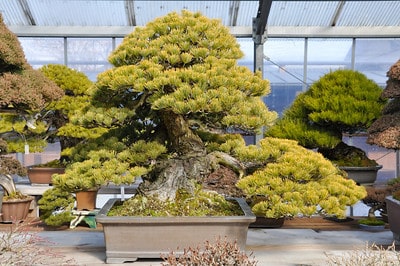
Goyomatsu
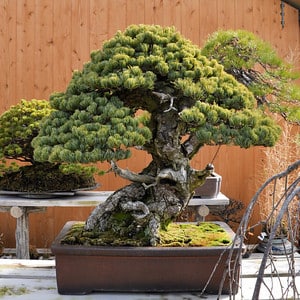
Goyomatsu
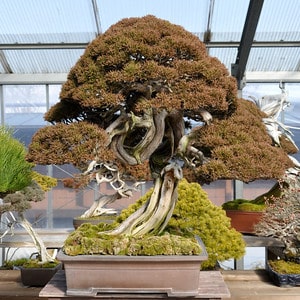
Shimpaku

Bonsai
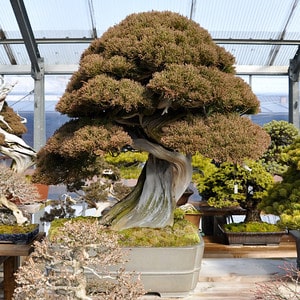
Shimpaku
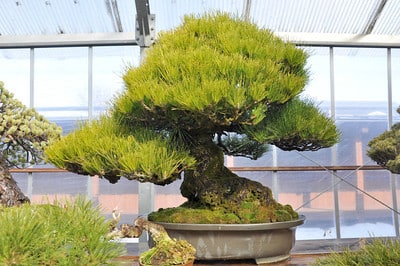
Kuromatsu

Goyomatsu

Goyomatsu
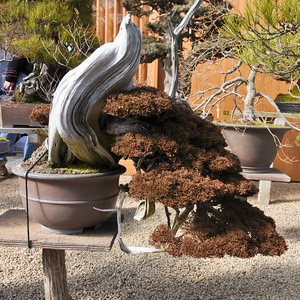
Shimpaku
Subscribe to Bonsai Tonight
New Posts Delivered Every Tuesday and Friday
Daniel Dolan says
Jonas:
Thanks for these great images.
2 Questions:
What type of Shimpaku turns “brown” like these? Mine are wintered in a protected area and stay green all winter….not quite as vibrant but green?
I noticed moss completely covering most pots. I have been taught and read in most books that moss is to be removed in winter as it can harbor insects and fungii. And I can’t understand how they know if their soil needs to be watered if it is completely covered.
Thanks.
D/D
xwires says
Hi Daniel – As John suggested, many shimpaku turn brown in winter when they get cold enough. It could be that the protection you provide your trees is enough for them to keep some color in winter. From what I’ve seen, trees shown at Kokufu are protected in winter so they’ll be green for exhibit, and other shimpaku simply turn brown. It may be that some strains keep greener than others, but I think any could turn brown with enough cold. Same thing for white pines – they can turn really yellow when they get cold, and then go green again when it warms up. I visited Suzuki’s nursery in February, 2009 – samui!
I too noticed the moss when I was there. I don’t know that it’s intentional, it just grows really quickly and it’s not a priority to remove it. What really surprised me was that the moss frequently traveled up the trunk and in between flakes of bark. It’s a good question for Matt, or Tyler, or Michael.
John Kirby says
Jonas, I have not been to Shinji Suzuki’s nursery (yet), it appears that he must actually let his trees freeze.frost to get that color on the Junipers. Have you been there in the winter? I guess I can ask Boon, but thught it might help with the question above. John
Armando Dal Col says
Thanks a lot for show me the beautiful Bonsai fro Suzuki’s garden. Thank you very much indeed. Armando Dal Col
John Kirby says
Jonas, the Tosho too look very “wintery”, what an absolutely wonderful set of pictures. I like these wandering around pictures a lot, they seem to give a great feel for the place (especially when you add in these and what Peter Tea posted a couple of weeks ago. Thanks, John
Jose Luis says
I recognize two trees that were originally styled by Kimura. The second Shimpaku and the last Goyo Matsu. Great trees!! Thanks for posting, Jose Luis